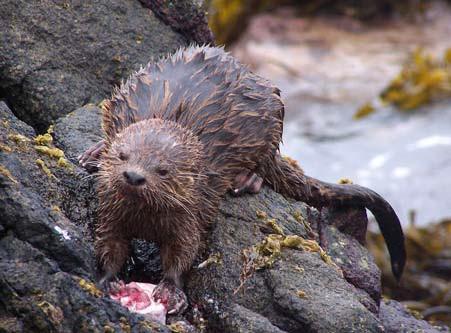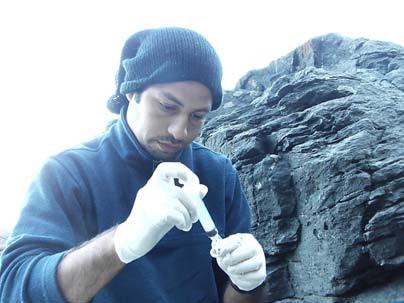Gonzalo Medina Vogel
Other projects
14 Dec 2004
Assessment of the Human Interactive Effect with Environmental Variables, Spatial Behavior and Habitat Use by Marine Otter (Lontra felina) in Central Chile
This study will provide information about the genetic diversity of the species, dispersal capacity and how human affect dispersal increasing isolation and the probability of extinction of the populations.

Marine otters are classified as endangered species by the IUCN. However, very little is known about the species abundance, population structure and connectivity. They are patchily distributed along the Pacific from 6ºS to 56ºS, using only rocky seashore and avoiding the sandy beaches. In the previous work supported by the RSG, Universidad Andrés Bello and Earthwatch Institute we could identify many aspects of the population biology and ecology of the species previously unknown, like the intrasexual territoriality, home range less than 4 km long, high use of terrestrial habitat (80%), great importance of terrestrial refuges and basic knowledge about their metapopulation structure.

We study eight areas along the Chilean coast with different rocky parches sizes and different distances among them, in which we consider the presence or the absence of the species through faeces detection or marine otter sightings on the sea. The results reveal the absence of the species in small and isolated rocky shores patches, and high frequency of detection in longer patches highly connected, or separated by less than 20 km of sandy beaches. Furthermore, our study confirmed the strong limitations of direct observations as a method to study this species, mainly because it spent around 80% of its time inside caves, mostly resting. So previous studies based on direct observation should be analysed carefully.
So during this research, we will use molecular markers (microsatellite loci) to study DNA isolated from blood and faeces samples to estimate genetic diversity and characterize the metapopulation genetic structure in order to infer metapopulation dynamics and connectivity in areas with different levels of anthropogenic impact. In addition, by genotyping faeces, we propose to study the otter behaviour such as home range, dispersion and infer population sizes based on an equivalent method to capture-mark (genetically)-recapture.
This study will provide information about the genetic diversity of the species, dispersal capacity and how human affect dispersal increasing isolation and the probability of extinction of the populations. The results will contribute to the knowledge of the marine otter population and its conservation and it will provide information about the minimum size that marine reserves and parks should be.